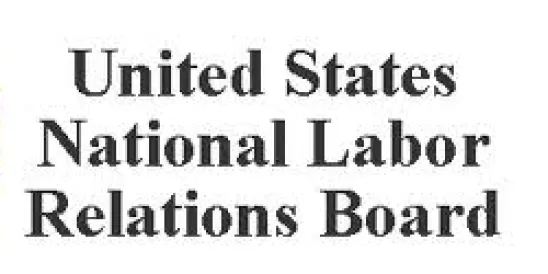On October 26, 2023, the National Labor Relations Board (NLRB) issued a final rule for joint-employer status that will make it far more likely for one business to be deemed a joint employer of another business’s employees under the National Labor Relations Act (NLRA). The new rule eliminates the clear standards and predictable consequences the current rule provides, depriving employers of the ability to reasonably forecast the risks and costs of their contracts with providers, vendors, subcontractors, and franchisees.
Quick Hits
- The NLRB finalized a new rule that provides an independent business entity may be deemed joint employer of another company’s employees merely because it has authority or control over any essential term or condition of their employment, regardless of whether it ever actually exercised such control.
- The new rule significantly expands the current rule’s definition of the “essential terms and conditions of employment,” by including additional terms that are inherently vague.
- The new rule takes effect on December 26, 2023 and rescinds and replaces the Board’s 2020 joint-employer rule.
New Joint-Employer Rule
Under the Board’s current joint-employer rule adopted in 2020, an entity may be considered a joint employer if it exercises actual and direct control over a specified and clearly defined list of essential terms and conditions of employment.
The new rule, titled “Standard for Determining Joint-Employer Status under the National Labor Relations Act,” eliminates the requirement that control be actually exercised, providing that an entity may be a joint employer if it “possesses the authority to control (whether directly, indirectly, or both), or to exercise the power to control … one or more of the employee’s essential terms and conditions of employment.” In the final rule notice, the NLRB explained that an entity has such direct or indirect control “regardless of whether the [entity] exercises such control.”
The new rule defines the “essential terms and conditions of employment” as: “(1) wages, benefits, and other compensation; (2) hours of work and scheduling; (3) the assignment of duties to be performed; (4) the supervision of the performance of duties; (5) work rules and directions governing the manner, means, and methods of the performance of duties and the grounds for discipline; (6) the tenure of employment, including hiring and discharge; and (7) working conditions related to the safety and health of employees.” Importantly, these seven terms represent what the Board considers the “core subjects of collective bargaining” contemplated by the NLRA.
Further, the NLRB’s final rule expands on its proposed rule released in September 2022 by requiring that a joint employer of a group of employees “must bargain collectively with the representative of those employees.” While a joint employer will be required to bargain only over those terms and conditions that it “possesses the authority to control or exercises the power to control,” it must bargain about all terms and conditions over which it has such authority or exercises power to control, even those the rule does not define as “essential.”
Despite comments to the proposed rule from employers in particular sectors and industries that anticipate substantially negative impacts, such as the building and construction industry, franchisors, staffing agencies, and healthcare, the NLRB declined to carve out any exceptions or otherwise make clear how and to what extent the rule applies to particular industries or common business arrangements.
Instead, the NLRB has left businesses to guess and rely upon the NLRB’s assertion that it will be “mindful that applying the final rule will require sensitivity to industry-specific norms and practices,” and has noted it “will take any relevant industry-specific context into consideration when considering whether an entity is a joint employer.”
Purported Common Law Principles
The new rule largely mirrors the short-lived and much-criticized rule the Board adopted in its 2015 decision in Browning-Ferris Industries of California, Inc., which had rejected the “direct and immediate” control framework. The new rule makes clear that joint-employer status only exists where an entity has authority or control over essential terms or conditions of employment, and the rule sets forth a limited list of what specifically is considered essential terms and conditions.
The Board majority stated that the rule “more faithfully grounds the joint-employer standard in established common-law agency principles.” However, the new rule actually expands on BFI’s broad approach, deeming joint-employer status can exist based on any level of authority or control the putative joint employer reserves or has over one essential employment term. BFI, at least, allowed for consideration of the extent to which that potential control existed and whether it was material to bargaining.
Dissenting to the new rule, Board Member Marvin Kaplan called the new rule “an unprecedented and unwarranted expansion of the Board’s joint-employer doctrine” and argued that it could “frustrate national labor policy” by placing multiple employers at the bargaining table, particularly some who may never have exercised control over the employees. Member Kaplan built his dissent on the framework under which federal agency regulations can be challenged, laying out a detailed and well-articulated argument for parties that will inevitably challenge the new rule in the federal courts.
Next Steps
The new rule takes effect on December 26, 2023, and will apply to cases filed after that date. All companies and business entities may now want to consider reviewing their current and pending contracts with third parties to evaluate whether those agreements could be interpreted as reserving the right to potentially control any essential term or condition of another entity’s employees.
And given that the actual exercise of direct control over another entity’s employees creates a meaningful risk of being deemed a joint employer under most federal labor and employment laws, an employer that allows the employees of third parties to perform work on its premises also may want to consider reviewing the actual practices of their supervisors and managers and (to the extent possible under any particular business situation) training them to avoid actions that might be used to argue it has direct or indirect control over another entity’s employees.





 />i
/>i
